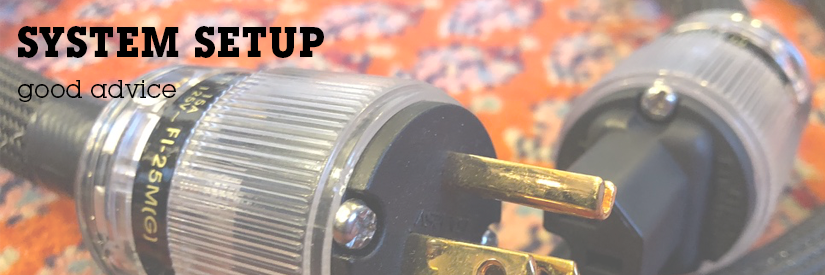System Setup
- Posted on

When was the last time you set up your stereo? A great way to improve your system is a fresh set-up. Give yourself some time, make a cuppa tea and get into it:
- Turn off and disconnect the whole hi-fi, including speaker wires. Take notes (or use bits of colored tape) to remind yourself of the various connections when you put it all back together.
- Now's a good time to dust, detangle wires and rearrange components.
- Level all components, especially turntable (put a level on the platter), and CD players.
- Replace speaker wire and interconnects if necessary - a quality interconnect can make an improvement but not past a point.
- Call us if you have any questions! (206) 522-9609.
- Clean all connectors with isopropyl alcohol. If you use bare wire for speaker connectors, snip off an inch and re-strip to expose fresh copper. Be sure to twist the ends tightly to avoid loose strands.
- When reconnecting speaker wires, be sure to get the polarity correct.
- Reconnect everything, keeping signal wires away from AC power cords (if they must cross, do so at a right angle). Drape wires loosely and avoid sharp bends and tight bundles.
- Plug your power cords into one power strip. Plug your amplifiers in closest to the power strip's power cable as they'll draw the most current. Avoid AC strips with surge suppressors, filters, lights or switches. Contact us for a simple, high quality power strip we recommend for hi-fi applications. It could be the single most significant upgrade you make to your system!*
- Turn on the system, source first, amp last. Leave your CD player and amplifier(s) on all the time.
- Boil a little more water and warm your tea, now it's time to have some fun.
- Give the system time to warm up and begin listening at a comfortable volume. If you haven't recently, take the time to experiment with your speaker placement. Distance from the wall will affect bass response, and toe-in (how far they're angled inwards) affects the tonal balance and focus of the stereo presentation. I usually start with the speakers ca. 1 foot from the wall pointing straight forwards. Toe in till the image stabilizes and back off a bit. Listen, then adjust again. Sometimes doing this with a friend helps - one of you can listen while the other moves speakers. Dial in your position while listening to a range of music, but get the sound right for the music you listen to most.
* A word on power strips. Many power strips contain surge suppression circuitry and some sort of AC noise filtration. We recommend them for computers and TVs but not for your hi-fi. The theory behind their use is to protect your equipment from fluctuations in power caused by power storms or other grid problems. Filtration seeks to remove noise from the AC sine-wave making it easier for your equipment's transformers to create smooth quiet DC needed for operation. Unfortunately those benefits come with deleterious effects. Surge suppressors, filters, switches, and lights all inhibit your amplifier's ability to draw current quickly to follow the dynamics of the music. We feel that dynamic accuracy is more important to live sounding music reproduction than fine detail and hence recommend using a parallel wired, hospital grade outlet strip with no other circuitry. We sell the Wiremold 8 outlet strip (recommended by Naim Audio).
And while we're talking power. A word about what frequently follows - corruption. There are high end power conditioners that claim to deliver unimpeded current flow while quieting line noise. The ones that work well are quite expensive and we've never heard one that unquestionably improves the high-current equipment we sell. Additionally, were the cost of a high-end power conditioner invested instead in your source, you'd certainly hear an improvement. It's all about allocation of resources.
